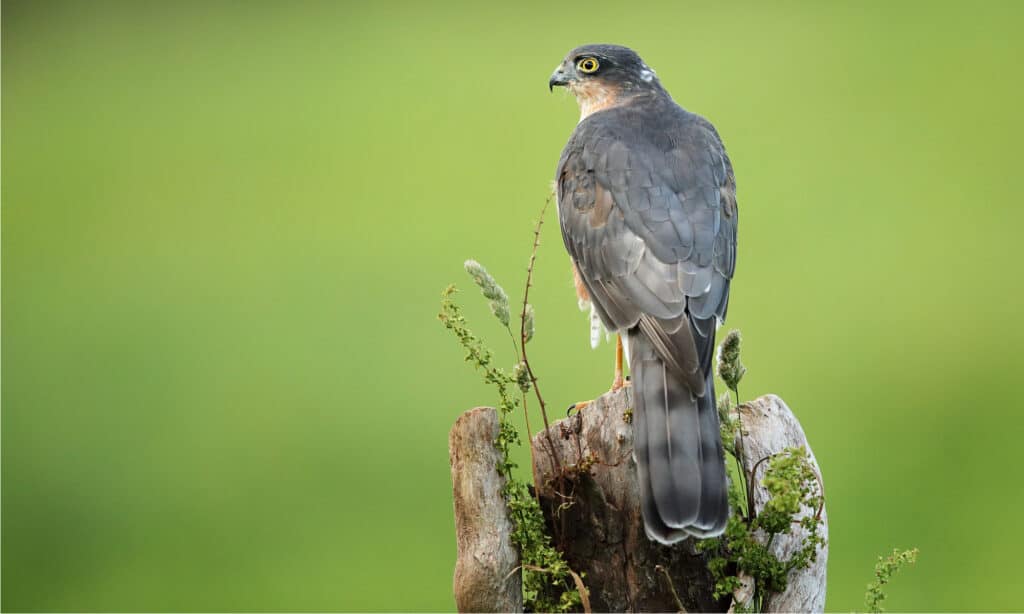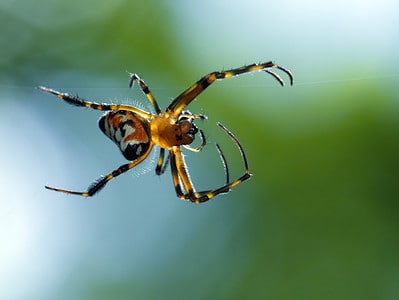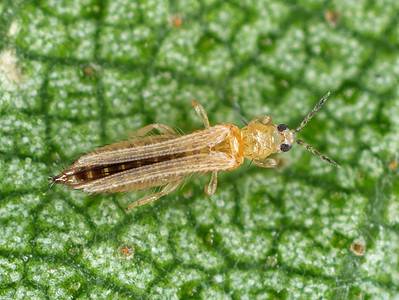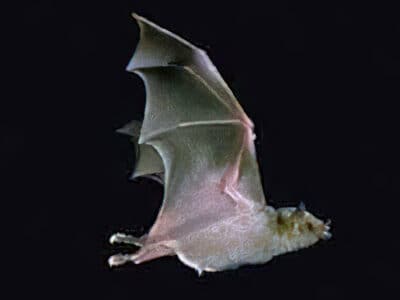Eurasian Sparrowhawk
Accipiter nisus
Females are typically 25% larger than males.
Advertisement
Eurasian Sparrowhawk Scientific Classification
- Kingdom
- Animalia
- Phylum
- Chordata
- Class
- Aves
- Order
- Accipitriformes
- Family
- Accipitridae
- Genus
- Accipiter
- Scientific Name
- Accipiter nisus
Read our Complete Guide to Classification of Animals.
Eurasian Sparrowhawk Conservation Status
Eurasian Sparrowhawk Facts
- Prey
- Small woodland birds
- Name Of Young
- Chicks
- Group Behavior
- Solitary/Pairs
- Fun Fact
- Females are typically 25% larger than males.
- Estimated Population Size
- 2 to 3.2 million
- Biggest Threat
- hunting, trapping, pesticide ingestion, wildfires, and pollution
- Most Distinctive Feature
- Bright yellow and orange eyes
- Distinctive Feature
- Short, broad wings and long tails
- Other Name(s)
- Northern sparrowhawk
- Wingspan
- 23 to 30 inches
- Incubation Period
- 33 days
- Age Of Independence
- 2 months
- Age Of Fledgling
- 24 to 28 days
- Habitat
- coniferous woodlands, parks, gardens
- Predators
- owls, northern goshawks, peregrine falcons, golden eagles, red foxes, and martens
- Diet
- Carnivore
- Lifestyle
- Diurnal
- Type
- Bird
- Common Name
- Eurasian sparrowhawk
- Number Of Species
- 6
- Location
- Europe, Asia, Africa
- Nesting Location
- Fork of a conifer tree near the trunk
- Migratory
- 1
View all of the Eurasian Sparrowhawk images!
“They need adequately spaced trees to weave in and out for hunting.”
Summary
The Eurasian sparrowhawk (Accipiter nisus) is a small bird of prey native to Europe, Asia, and Africa. They inhabit coniferous woodlands and city parks in over 100 countries, where they zip around trees and attack their prey. Small woodland birds are their primary food source, and females eat more than males to aid in successful reproduction. Discover the fascinating facts about the Eurasian sparrowhawk, including where it lives, what it eats, and how it behaves.
5 Amazing Eurasian Sparrowhawk Facts
- These birds are frequent visitors to backyard gardens and city parks.
- Their bodies are perfect for hunting in confined spaces, where they weave through objects and sneak up on their prey.
- They can reach speeds up to 50 mph!
- They can chase their prey on foot through dense vegetation.
- Females are typically 25% larger than males.
Where to Find the Eurasian Sparrowhawk
Eurasian sparrowhawks live in Europe, Asia, and Africa in over 100 countries, including the United Kingdom, Russia, India, Iran, and Sudan. Populations in more temperate southern regions stay in their environments year-round, while those breeding in northern areas, like Russia, migrate to warmer climates during winter. They prefer coniferous woodlands that are neither too dense nor too sparse. They need adequately spaced trees to weave in and out of for hunting. You may also find them in city parks and gardens as long as enough tall trees are present.
Eurasian Sparrowhawk Nest
They breed in well-grown coniferous woodlands, where they place their nest in the fork of a tree near the trunk or on top of a small shrub. They build a new nest every year (males do most of the work), using loose twigs to make a two-foot-long structure, and line it with bark chips.
Scientific Name
The Eurasian sparrowhawk (Accipiter nisus) belongs to the Accipitriformes order in the Accipitridae family, which includes diurnal birds of prey with strongly hooked bills. The Accipiter genus consists of 51 species of goshawks and sparrowhawks. There are six recognized subspecies of Eurasian sparrowhawks.
Size, Appearance, & Behavior
The Eurasian sparrowhawk is a small bird of prey, measuring 11 to 16 inches long and weighing 3.9 to 12 ounces, with a 23 to 31-inch wingspan. Females are 25% larger than males, weighing twice as much, which aids in their reproduction success. This species has short, broad wings, long tails, and small bills. Adult males have grey upper parts and red barred underparts, with orangish-yellow eyes. Adult females have dark brown or greyish-brown upper parts and brown-barred undersides, with bright yellow to orange eyes.
This species is solitary and lives singly or in pairs, whether hunting, roosting, or nesting. Their bodies are perfect for hunting in confined spaces and are often found in gardens in towns and cities. They are swift and agile, using rapid wingbeats to fly fast and low to the ground. Their average speed is between 30 and 40 mph, but they can reach speeds up to 50 mph! And they make loud vocalizations, such as high-pitched cackling and shrill alarm calls.

Adult male Eurasian sparrowhawks have grey upper parts, with orangish-yellow eyes.
©Edwin Godinho/Shutterstock.com
Migration Pattern and Timing
Some Eurasian sparrowhawks are residents in their environments, while others are medium-distance migrants. Most of the European populations live in their environments year-round. But those that breed in northern regions like Russia will migrate south for winter to countries such as Iran, India, and Sudan. You can find them as far south as Tanzania.
Diet
Eurasian sparrowhawks are carnivores who hunt by surprise attacks.
What Does the Eurasian Sparrowhawk Eat?
Their diet primarily consists of small woodland birds, such as finches, tits, sparrows, buntings, starlings, and thrushes. Females typically eat larger birds, around 18 ounces more than males. These sparrowhawks also eat mice, bats, voles, shrews, squirrels, rabbits, carrion, and insects. They hunt by surprise attack, hiding behind hedges and copses and waiting for birds before darting out fast and low. It can stoop over prey from significant heights, flip upside down to grab prey from below, and run after them through vegetation. However, only 10% of their attacks are successful.
Predators, Threats, and Conservation Status
The IUCN lists the Eurasian sparrowhawk as LC or “least concern.” Due to its extensive range and extremely large and stable population, this species does not meet the “threatened” status thresholds. Despite their stable population, this species is still vulnerable to several dangers. Their biggest threats include hunting, trapping, pesticide ingestion, wildfires, and pollution.
What Eats the Eurasian Sparrowhawk?
Their natural predators include owls, northern goshawks, peregrine falcons, golden eagles, red foxes, and martens. Raptors may try to rob the nest of Eurasian sparrowhawks, but females stand guard and are successful in running off most intruders. Males typically stand watch and make alarm calls.
Reproduction, Young, and Molting
Eurasian sparrowhawks form monogamous pair bonds during each breeding season but may change mates yearly. Males feed their mate extra food before she lays eggs. Studies show that females with high weight are more successful in laying more eggs. She lays an average of four or five pale blue eggs with brown spots and incubates them for 33 days. Over 20% of nestlings over two days old die from starvation, abandonment, bad weather, and nest predation. The young fledge the nest 24 to 28 days after hatching, but their parents continue feeding them for another 30 days. They reach sexual maturity between one and three years and live an average of five years, but they can live up to 20 years.
Population
The global Eurasian sparrowhawk population is estimated to number two to three million mature individuals. Their population is stable and has increased in Europe since the 1980s and remained steady over the last three generations. Their numbers are not experiencing any extreme fluctuations or fragmentations.
Related Animals:
View all 117 animals that start with EEurasian Sparrowhawk FAQs (Frequently Asked Questions)
Where do Eurasian sparrowhawks live?
Eurasian sparrowhawks live in Europe, Asia, and Africa in over 100 countries. They prefer coniferous woodlands that are neither too dense nor too sparse.
Do sparrowhawks have any predators?
Their natural predators include owls, northern goshawks, peregrine falcons, golden eagles, red foxes, and martens.
How big is a Eurasian sparrowhawk?
The Eurasian sparrowhawk is a small bird of prey, measuring 11 to 16 inches long and weighing 3.9 to 12 ounces, with a 23 to 31-inch wingspan.
What do Eurasian sparrowhawks eat?
Their diet primarily consists of small woodland birds, such as finches, tits, sparrows, buntings, starlings, and thrushes.
What threatens the Eurasian sparrowhawk?
Their biggest threats include hunting, trapping, pesticide ingestion, wildfires, and pollution.
Do Eurasian sparrowhawks mate for life?
Eurasian sparrowhawks form monogamous pair bonds during each breeding season but may change mates yearly.
How many Eurasian sparrowhawks are there?
The global Eurasian sparrowhawk population is estimated to number two to three million mature individuals.
Thank you for reading! Have some feedback for us? Contact the AZ Animals editorial team.
Sources
- IUCN Redlist, Available here: https://www.iucnredlist.org/species/22695624/199751254
- Jstage, Available here: https://www.jstage.jst.go.jp/article/osj/17/1/17_95/_article/-char/ja/
- Wiley Online Library, Available here: https://onlinelibrary.wiley.com/doi/abs/10.1111/j.1600-048X.2010.05080.x
- Inter Science, Available here: https://archive.ph/20130105061322/http://www3.interscience.wiley.com/journal/122567228/abstract

















